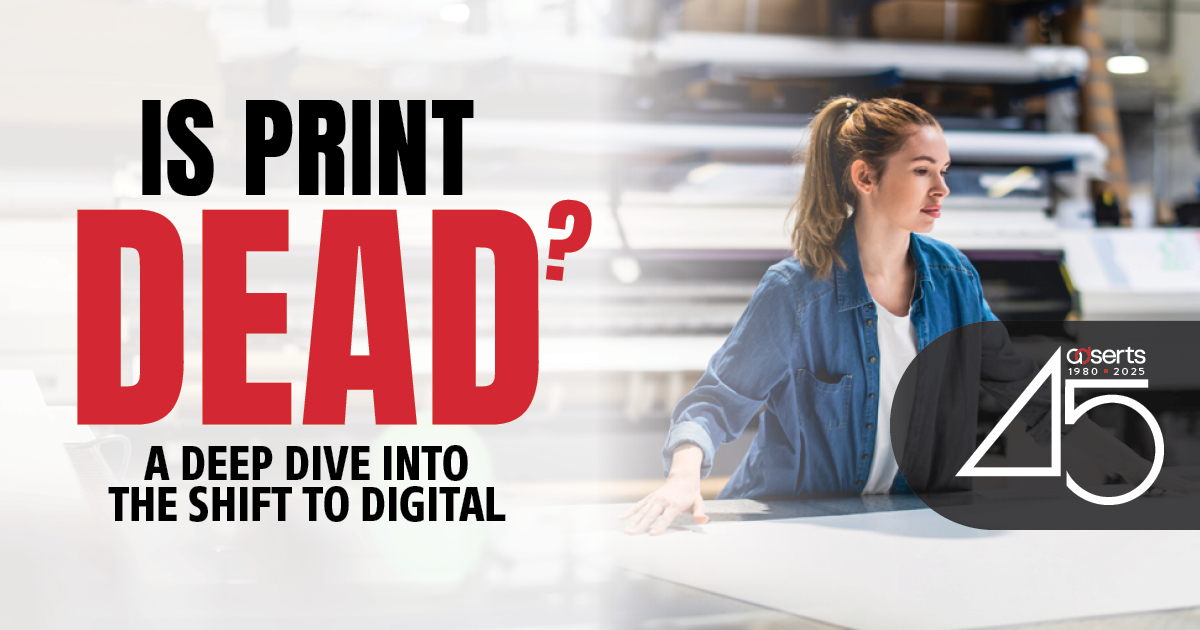Is Print Dead?: A Deep Dive Into the Shift to Digital
By Tyler Van Kleef - Digital MarketerPosted on February 7, 2025

In an era dominated by smartphones, streaming services, and social media, the question on every advertiser’s mind is: "Is print dead?" While print media isn’t extinct, the advertising world has seen a shift toward digital platforms. For advertisers, understanding this transformation and its implications is critical for crafting effective strategies.
The Decline of Print Advertising
Print media, including newspapers, magazines, and direct mail, has long been a cornerstone of advertising. However, the rise of digital technologies has fundamentally altered consumer behavior. A few key trends illustrate this decline:
- Decreasing Circulation: Newspaper and magazine subscriptions have dropped significantly as consumers turn to digital channels for news and entertainment.
- Ad Spend Migration: According to industry reports, global ad spend on print has steadily declined, while digital platforms like Google and Facebook have captured an ever-growing share of the market.
- Consumer Preference for Digital: Digital offers immediacy, interactivity, and personalization that print struggles to match, making it the preferred choice for many modern consumers.
Why Digital Advertising Dominates
The migration to digital isn’t just a trend—it’s a response to the changing demands of both consumers and advertisers. Here’s why digital advertising has become so dominant:
- Data-Driven Insights: Digital platforms provide unparalleled data on consumer behavior, allowing advertisers to target specific audiences with precision.
- Cost Efficiency: Online campaigns often have a lower cost-per-impression compared to traditional print ads.
- Measurable ROI: Digital ads offer clear metrics, such as click-through rates, conversions, and impressions, making it easier to gauge effectiveness.
- Dynamic Content: The ability to use video, animation, and interactive elements gives digital advertising an edge in capturing attention and engagement.
Is There Still a Role for Print?
Despite the dominance of digital, print advertising is far from dead. In fact, it retains unique advantages that digital cannot replicate:
- Tangibility: Print media offers a physical presence that can feel more personal and engaging, particularly for high-end or luxury brands.
- Targeted Reach: Local newspapers, niche magazines, and direct mail can be highly effective in reaching specific demographics.
- Credibility: Many consumers still perceive print as more trustworthy and credible compared to digital content, which can be cluttered with misinformation and intrusive ads.
The Case for Integrated Campaigns
Rather than viewing print and digital as competitors, advertisers should consider how the two can work together in integrated campaigns. Combining the reach and data of digital with the tangibility and trustworthiness of print can amplify messaging and impact.
For example:
- QR Codes and AR: Print ads can include QR codes or augmented reality features that drive readers to digital experiences.
- Content Repurposing: Articles, white papers, or ads in print can be transformed into digital formats for social sharing and broader reach.
- Cross-Promotion: Use digital platforms to drive subscriptions to print publications and as well as using print to promote your digital platforms.
So, is print dead? While digital advertising has become the dominant force, print remains a viable and valuable medium in the right circumstances. For advertisers, the key lies in adaptability—embracing the shift to digital while recognizing the enduring power of print. The most successful campaigns will be those that blend the best of both worlds, meeting audiences wherever they are.

